-
 Bitcoin
Bitcoin $117300
1.99% -
 Ethereum
Ethereum $3884
5.89% -
 XRP
XRP $3.268
9.33% -
 Tether USDt
Tether USDt $1.000
0.02% -
 BNB
BNB $783.0
1.78% -
 Solana
Solana $173.6
3.51% -
 USDC
USDC $0.9999
0.00% -
 Dogecoin
Dogecoin $0.2193
7.00% -
 TRON
TRON $0.3380
0.30% -
 Cardano
Cardano $0.7769
5.08% -
 Stellar
Stellar $0.4350
9.36% -
 Hyperliquid
Hyperliquid $40.23
5.78% -
 Sui
Sui $3.739
6.95% -
 Chainlink
Chainlink $18.30
9.46% -
 Bitcoin Cash
Bitcoin Cash $581.7
2.11% -
 Hedera
Hedera $0.2577
5.51% -
 Ethena USDe
Ethena USDe $1.001
0.00% -
 Avalanche
Avalanche $23.08
4.23% -
 Litecoin
Litecoin $121.7
2.24% -
 UNUS SED LEO
UNUS SED LEO $8.962
-0.34% -
 Toncoin
Toncoin $3.332
1.36% -
 Shiba Inu
Shiba Inu $0.00001273
3.39% -
 Uniswap
Uniswap $10.35
6.84% -
 Polkadot
Polkadot $3.818
4.01% -
 Dai
Dai $1.000
0.01% -
 Bitget Token
Bitget Token $4.446
2.13% -
 Cronos
Cronos $0.1491
4.96% -
 Monero
Monero $255.4
-9.78% -
 Pepe
Pepe $0.00001099
4.80% -
 Aave
Aave $284.0
8.01%
What is Cardano's future development prospect?
Cardano showcases its robust technological prowess with a PoS consensus, Plutus smart contract support, decentralized governance, and enterprise-grade capabilities backed by a strong research and development team.
Feb 16, 2025 at 03:43 am
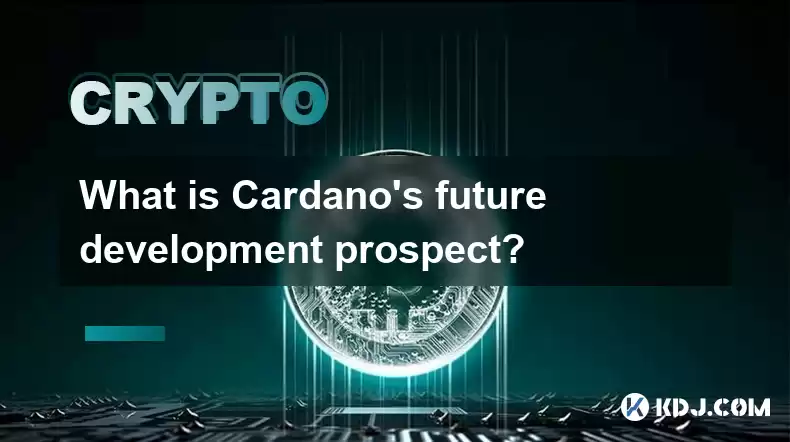
Key Points:
- Cardano's Proof-of-Stake Consensus Mechanism
- Smart Contract Functionality Support
- Decentralized Governance Structure
- Enterprise-Grade Blockchain Features
- Strong Research and Development Team
Article:
1. Proof-of-Stake Consensus Mechanism
Cardano employs a Proof-of-Stake (PoS) consensus model called Ouroboros, which is significantly more energy-efficient and secure than Proof-of-Work (PoW) systems like Bitcoin. In PoS, validators with larger stakes in the Cardano blockchain have a higher chance of validating blocks and earning rewards, fostering a decentralized and secure network.
2. Smart Contract Functionality Support
Cardano has implemented a powerful programming language called Plutus, which enables developers to create custom smart contracts. These contracts can automate various processes and create decentralized applications (dApps) that run on the blockchain, offering enhanced efficiency and control. Plutus's rigorous security features and formal verification capabilities ensure the reliability of smart contracts.
3. Decentralized Governance Structure
Cardano's Voltaire era introduces a decentralized governance model known as Project Catalyst, empowering the community to participate in the decision-making process. ADA token holders can propose and vote on funding allocations, shaping the future development and direction of the ecosystem. Catalyst encourages a diverse and self-sustaining community around Cardano.
4. Enterprise-Grade Blockchain Features
Cardano's design meets the high standards required by enterprise adoption. Its high transaction throughput, low transaction fees, and robust security mechanisms make it suitable for large-scale commercial applications. Cardano is also ISO/IEC 27001-accredited, demonstrating its adherence to international security and risk management standards.
5. Strong Research and Development Team
Cardano is backed by a renowned research and development team led by Input-Output Global (IOG). IOG's mission is to advance the science and development of blockchain technology. Their contributions to decentralized consensus and Layer-2 scaling solutions are highly regarded within the academic community.
FAQs:
Q: What is ADA?
A: ADA is the native token of the Cardano blockchain. It serves as both a medium of exchange and a governance token.
Q: How does Cardano handle transaction fees?
A: Cardano's minimum transaction fee is set at 0.17 ADA. Nodes reward the validator with this fee for processing and verifying the transaction.
Q: Can Cardano compete with Ethereum?
A: Cardano and Ethereum are different blockchains with distinct strengths. Cardano focuses on scalability, security, and environmental sustainability, while Ethereum has a larger existing developer ecosystem.
Disclaimer:info@kdj.com
The information provided is not trading advice. kdj.com does not assume any responsibility for any investments made based on the information provided in this article. Cryptocurrencies are highly volatile and it is highly recommended that you invest with caution after thorough research!
If you believe that the content used on this website infringes your copyright, please contact us immediately (info@kdj.com) and we will delete it promptly.
- Cold Wallet Crypto in 2025: The Future is Now, Ya'll
- 2025-08-08 05:10:13
- MAGACOIN, SOL, and ADA: A Tale of Shifting Tides in Crypto
- 2025-08-08 05:10:13
- SHIB Price, PEPE, and the Memecoin Supercycle: Who Will Reign Supreme?
- 2025-08-08 05:50:12
- Pudgy Penguins Price Prediction: Google Trends & Breakout Signals
- 2025-08-08 05:50:12
- UAE Crypto Regulation: SCA and VARA Unite to Streamline the Future of Digital Assets
- 2025-08-08 05:55:48
- MAGACOIN Finance: The Presale Phenomenon Rocking the Crypto World
- 2025-08-08 05:55:48
Related knowledge

Where can I buy UMA (UMA)?
Aug 07,2025 at 06:42pm
Understanding UMA and Its Role in Decentralized FinanceUMA (Universal Market Access) is an Ethereum-based decentralized finance (DeFi) protocol design...

What exchanges support buying IOTA (MIOTA)?
Aug 07,2025 at 09:58pm
Understanding the Role of Private Keys in Cryptocurrency SecurityIn the world of cryptocurrency, private keys are the cornerstone of ownership and con...
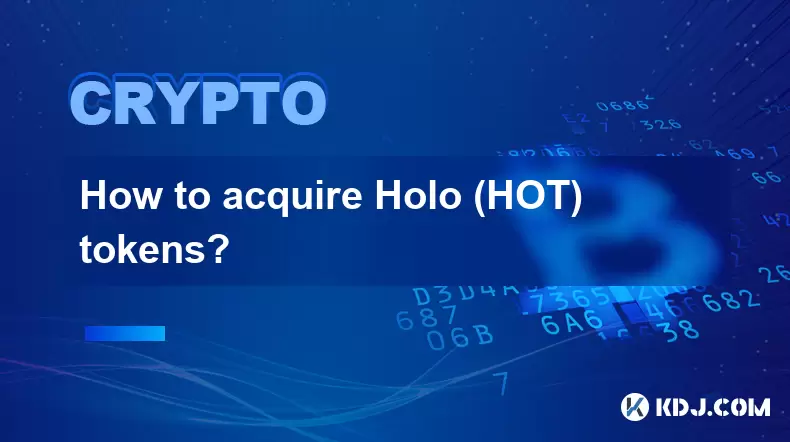
How to acquire Holo (HOT) tokens?
Aug 08,2025 at 05:56am
Understanding Holo (HOT) and Its EcosystemHolo (HOT) is a cryptocurrency token associated with the Holo ecosystem, which is built on the Holochain fra...
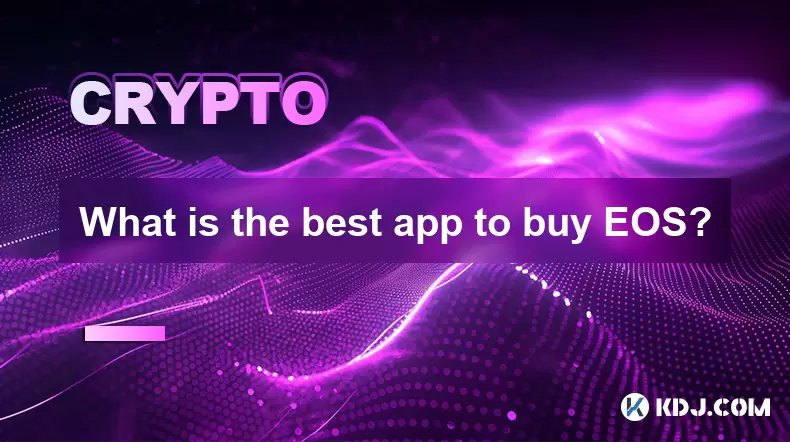
What is the best app to buy EOS?
Aug 07,2025 at 04:35pm
Understanding EOS and Its Role in the Cryptocurrency EcosystemEOS is a blockchain platform designed to support decentralized applications (dApps) with...
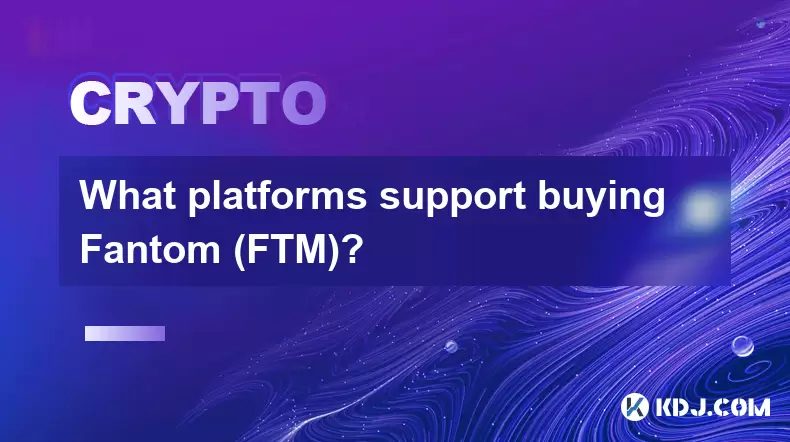
What platforms support buying Fantom (FTM)?
Aug 08,2025 at 01:56am
Overview of Fantom (FTM) and Its EcosystemFantom (FTM) is a high-performance, scalable, and secure layer-1 blockchain designed to overcome the limitat...
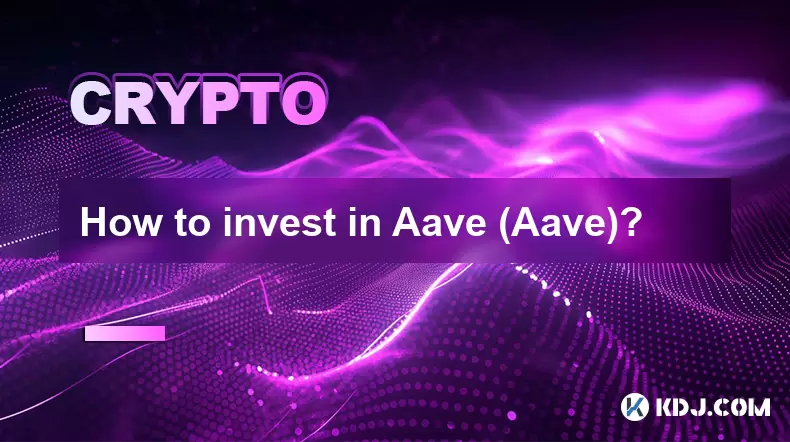
How to invest in Aave (Aave)?
Aug 08,2025 at 01:07am
Understanding Aave (AAVE) and Its Role in DeFiAave is a decentralized finance (DeFi) protocol that enables users to lend, borrow, and earn interest on...

Where can I buy UMA (UMA)?
Aug 07,2025 at 06:42pm
Understanding UMA and Its Role in Decentralized FinanceUMA (Universal Market Access) is an Ethereum-based decentralized finance (DeFi) protocol design...

What exchanges support buying IOTA (MIOTA)?
Aug 07,2025 at 09:58pm
Understanding the Role of Private Keys in Cryptocurrency SecurityIn the world of cryptocurrency, private keys are the cornerstone of ownership and con...

How to acquire Holo (HOT) tokens?
Aug 08,2025 at 05:56am
Understanding Holo (HOT) and Its EcosystemHolo (HOT) is a cryptocurrency token associated with the Holo ecosystem, which is built on the Holochain fra...

What is the best app to buy EOS?
Aug 07,2025 at 04:35pm
Understanding EOS and Its Role in the Cryptocurrency EcosystemEOS is a blockchain platform designed to support decentralized applications (dApps) with...

What platforms support buying Fantom (FTM)?
Aug 08,2025 at 01:56am
Overview of Fantom (FTM) and Its EcosystemFantom (FTM) is a high-performance, scalable, and secure layer-1 blockchain designed to overcome the limitat...

How to invest in Aave (Aave)?
Aug 08,2025 at 01:07am
Understanding Aave (AAVE) and Its Role in DeFiAave is a decentralized finance (DeFi) protocol that enables users to lend, borrow, and earn interest on...
See all articles

























































































